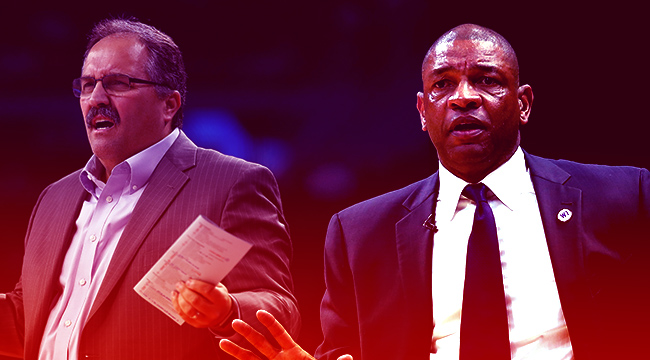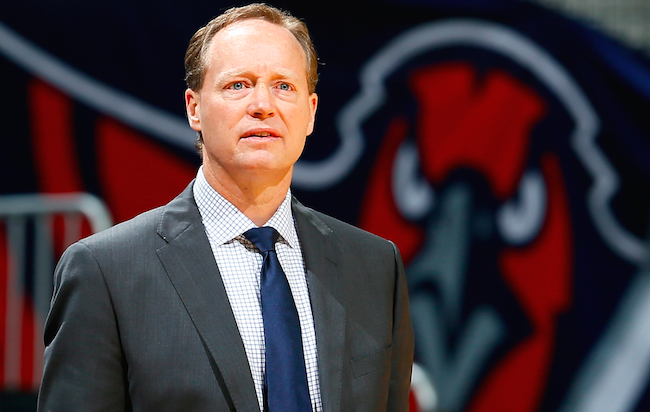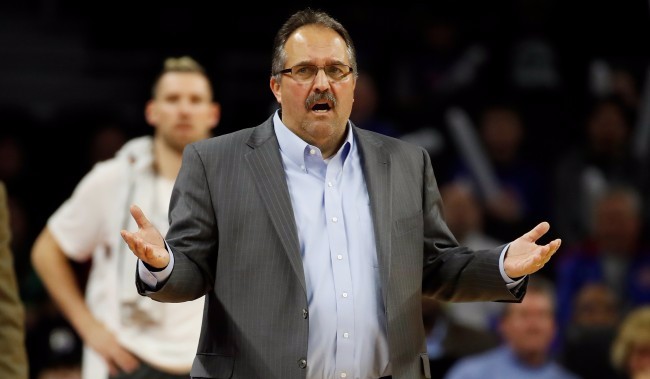
On Sunday night, the final piece remaining from the Hawks’ “Player of the Month” starting five from January 2015 departed for good when Paul Millsap agreed to a 3-year, $90 million deal with the Denver Nuggets. With Millsap gone, the last remaining links to that 2014-15 squad that earned the East’s top-seed on the Hawks’ current roster are Dennis Schröder and Kent Bazemore.
The 2017-18 Hawks will look far different than any of the Hawks teams we’ve seen since their playoff streak began in 2008, when Joe Johnson, Al Horford, and Josh Smith were Atlanta’s version of a Big Three. The playoffs aren’t out of the question for the Hawks next season thanks to the relative weakness of the rest of the middle of the pack in the Eastern Conference, but the team built to contend for homecourt in the first round of the playoffs is gone.
This was seemingly inevitable after last summer’s moves shipped Jeff Teague to Indiana and saw Al Horford walk to Boston. Once Horford was allowed to leave, the rebuild should have begun, but it never did. Every step backwards was met with a half-step forwards, keeping the treadmill of mediocrity going, all the way to a first round exit in this year’s playoffs.
Horford was allowed to walk, but Dwight Howard was signed to a massive, 3-year deal. Korver was shipped off to the Cavaliers for a draft pick, but Ersan Ilyasova was brought in for Tiago Splitter and a second-rounder at the deadline. Paul Millsap was dangled in January talks, but was eventually pulled off of the table in deadline discussions. The Hawks’ refusal to pick a direction, either going all in with their core group from that 2015 team or setting a rebuild in motion by dealing off players they weren’t going to keep to attain assets, can be traced back to one significant decision.

When Danny Ferry left his job as president of basketball operations and general manager in disgrace in 2015, the Hawks, in an effort to keep everything together during their best regular season in franchise history, promoted Wes Wilcox to general manager and made coach Mike Budenholzer president of basketball operations. Bud joined Doc Rivers with the Clippers and Stan Van Gundy with the Pistons as coaches that also held the top front office position with their club, and as all three franchises have seen things come apart to some extent over the past three years, it calls into question the viability of the coach-president combo.
Maybe it’s coincidence and just an anomaly of the small sample size, but I think there’s more to the head coach-president combo not working. It’s not that these three aren’t able to handle the time commitments of both jobs, or that they’re bad talent evaluators incapable of finding quality players. Instead, it’s the inability of a coach to detach themselves from that role and make an honest assessment of when it’s time to pivot and go in a new direction that has held them back.
Gregg Popovich is pointed to as the example of how it can work, but he came from the front office to the sidelines in San Antonio after already delivering the rebuild by way of landing Tim Duncan with the top pick. Pop is often the exception to the rule in the NBA anyways, and the three teams in question presently as examples of the coach-president/GM combo all have a common thread in that they all have been forceful in maintaining the status quo.
In Los Angeles, it was Rivers’ insistence that Chris Paul, Blake Griffin, and DeAndre Jordan, if surrounded by the right veterans, could compete in the West. Now, Paul has forced his way to Houston — which at least allowed the Clippers to get some return on him — and the team is building around the newly re-signed Griffin on a massive deal with, once again, little in the way of depth around him.

In Detroit, it was Van Gundy going all in on the pairing of Andre Drummond and Reggie Jackson after one season, feeling like he could make them into the mold of his Magic team that rode Dwight Howard to the Finals in 2009. Now, Detroit finds itself in the worst possible territory in basketball, capped out with very little room to maneuver, little hope for internal growth, all while being a late lottery team. Van Gundy has reportedly engaged teams in trade talks about anyone and everyone on the roster for the past year, but they’re yet to make any move happen.
In Atlanta, it was a front office tug of war between Budenholzer and Wilcox that never allowed them to let go of Horford or Millsap at the trade deadline to recoup assets ahead of their free agency summers. A rebuild is never palatable to anyone established in an organization, but that’s especially the case for a head coach. And so, when it came time to pull the trigger on a move to bring something back for their All-Star frontcourt, there wasn’t anyone willing to do so with the power to make it happen.
The job of the front office and the job of the head coach are very different. The head coach’s job is to focus on the present and do everything he can to make the roster he has a winner. The job of the front office is to figure out the best path to a winner and see things in the short and long term. What does a move mean for the team now and also in three or four years? A coach cares simply about the immediate.
The inability to divorce themselves from that role — which is the thing that has made them all excellent coaches — is why the coach-president combo doesn’t work. You simply have to look at what situations the Clippers, Pistons, and Hawks find themselves in and how there’s no easy fix for any of them in the immediate future.






